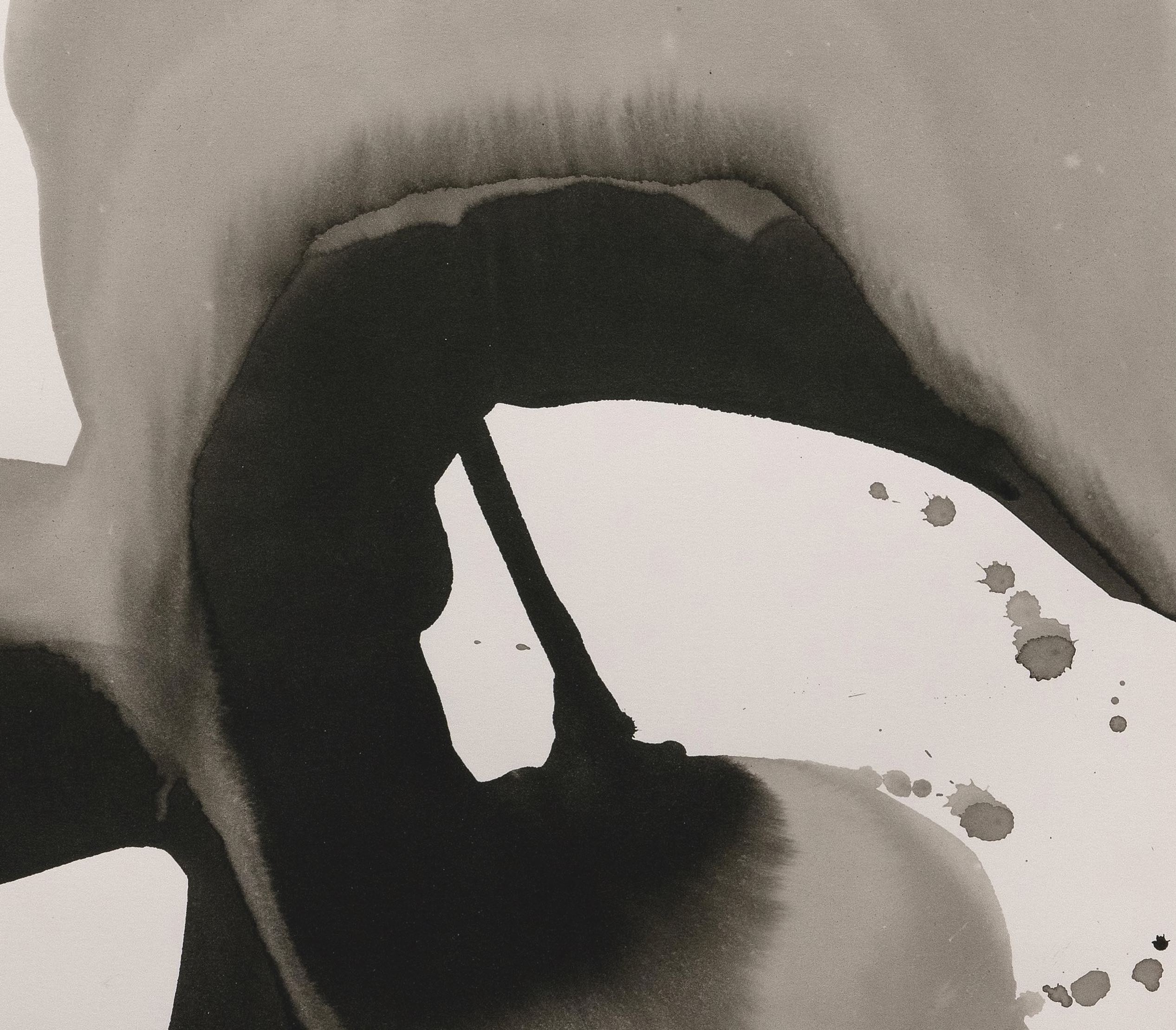Warning: Some ads appear on Art-icle. In order to support the site, please disable your Adblock, uBlock Origin, and/or equivalent while browsing. Thank you for your understanding, and thus, for your support!
It was at the Galerie Werner Klein’s booth, at the « Drawing Now Art Fair », Paris, that I became aware of the work of Christiane Löhr, sculptor and draughtswoman. I confess a preference for certain drawings (but what is it that “decides” to call you?). The drawing, when it is parsimonious, “minimal”, as the artist says, must “hold” in the space of the paper, space which, for her, is an active partner, and not just a support, a background. It’s always a mystery why such a work “speaks” to you, isn’t it? It’s quite inexplicable. Like this drawing below. What attracted me, and then intrigued me, was the blurred and/or trembling aspect of its workmanship. It’s that Löhr, after making her line in oil pastel, puts her finger on it, exerting some pressure here and there. She says: “Then you have these blurred lines, which makes you look at a little bit dizzy. I want to bring together the empty space of the paper and the lines. […] Sometimes I think that, with the lines, I try to organize the empty space.” (See the Interview).
What surprised me during our conversation was that Löhr said that although we see several lines, in fact it is only one.

But why not? If you drop a spool of thread on the ground, already a little untangled, you will have several figures, but it is always the same thread. Afterwards, of course, the Löhrian pattern does not have a unique thickness, it is more or less wide, and enlarged or not.
All this work upstream to, downstream, always try, whatever the medium, to bring to the “presence”. Nothing mystical, nor Heideggerian. Let us define the presence as what is consistent in the space, as what occupies it; being understood that this “space” is not a natural datum, it is what one calls the “surface” of a sheet of paper or that of a canvas; where one knows well that space, in term of pure physics, can be only quadridimensional (3 D + Time). There is thus no space on a sheet or a canvas, but an available surface. All this to say that, in these aesthetic circumstances, the word “space” is not given, it is necessarly a constructed mental process.
Exactly, as, conversely (ceteris paribus) you “have” empty bodies but nevertheless filled with organs. Obviously, this (potential) effect of presence is always formidable for minimal drawing, because it is weakened from the outset by its device and the anti-babble (there are of course very talkative drawings, very, perhaps even too much so — see — Mehretu). In drawing, this presence, actualised, takes on a haptic form; it imposes itself on the viewer. From then on, after this transactional time (I look at you, you look at me, and now…), we get closer, this allowing a new proposition, added to the former : the line, in part, becomes as hesitating, but not that much. Hesitation somewhere between affirmation ?
In a nutshell: What does this trembled-moved express? Fragility.

In the ink drawings, as above, we have, in contrast to the oil pastel drawings, a clear impression of volume, and thus of illusionism. Löhr explains that she has to go very fast with these drawings, because she uses ink and water. It is thus a double attempt of appearance and dissolution of the drawing; or again, of a mixture between attenuation and brightness of the black, among a subtle variation of grey. This type of drawing, along with the one above, contrasts with the sculptures produced by the artist, which are extremely delicate and quite homogeneous; it seems that “ink drawing” allows for a kind of, from my point of view, greater impulsive liberation, allowing the emergence of the strange, from an almost organic and threatening form.
And then there is this third kind of drawing that Christiane Löhr practices, among those in oil pastel, in ink; these executed with graphite

I briefly assumed that in Löhr’s drawings one could certainly attest to a double movement of hesitation/affirmation; of the appearance and dissolution of the drawing, i.e. a more or less strong confirmation of the presence. And it is certainly the graphites that best express this tendency, i.e., the circonvolutions of the presence, as in here:

In terms of mass, the drawing above seems to be well divided, for the time being, between absence of trace, what one would tend to call the void, but, again, is it not a name to which we have, without foundational justification, become too accustomed? For who can see the void? No one can. On the other hand, we can attest to the presence of the void, and the philosopher and mathematician Pascal was the first to try it. The fact that a sheet of paper remains unmarked cannot therefore symbolize emptiness, except for an artist and the layman. But one is not obliged to adhere. Let’s talk then about the difference between blank surface and invested surface. As we can see, in balance, above. Now, what more can we say? The thread, always contiguous, in terms of constitutive nature, tells a story, a history that one must follow all along the line expressing the hazards of the affirmation and the restraint, even, almost, of the erasure.
Léon Mychkine
![]()
Donate to Art-icle via PayPal

